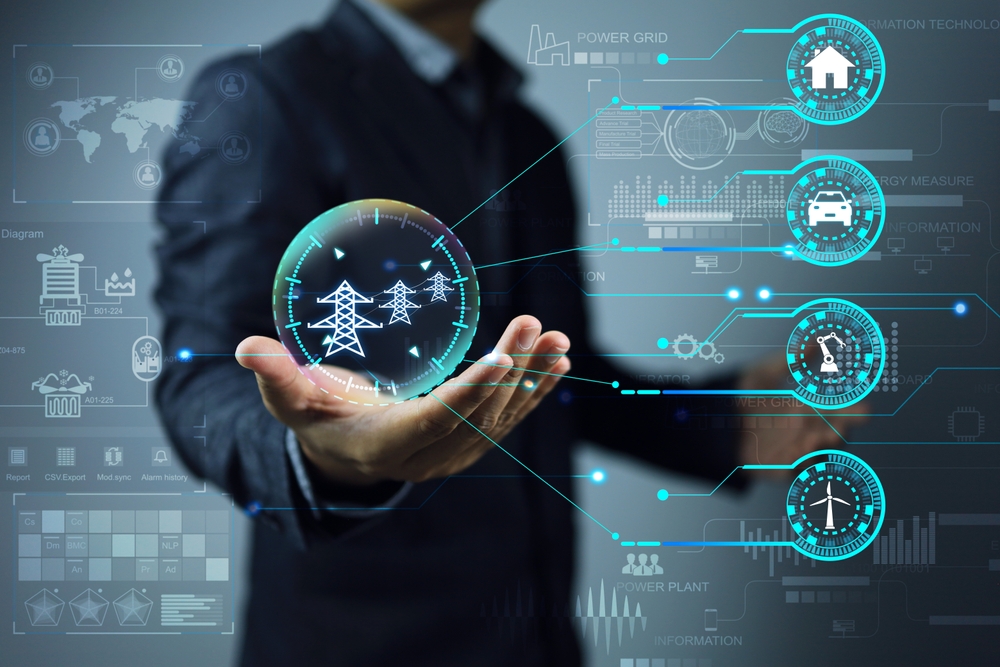Ellie Gabel explores how interconnected microgrids transform energy systems by enabling real-time communication, coordination, and aggregate intelligence across distributed energy networks.
Thanks to microgrids, the energy sector is experiencing an attractive change. What began as an isolated island of a dispersed generation has evolved into something much more refined: interconnected microgrids that communicate, coordinate and collaborate in real time.
This evolution reflects a fundamental shift towards intelligent, networked energy systems that behave like collective intelligence rather than standalone installations.
The technology behind conversation
The migration from individual microgrids to interconnected networks stems from a high-level communications infrastructure that can handle real-time data exchange and coordinated decisions.
Modern microgrid systems rely on standardized protocols and advanced analytics to seamlessly coordinate distributed energy resources. This technology foundation allows microgrids to act as intelligent networks rather than as isolated installations.
Communication protocols and standards
Transforming from isolated microgrids to communication networks relies on sophisticated digital infrastructures that allow for seamless data exchange and coordinated decision-making.
Modern communication protocols are the common language that these systems use to share important information about energy production, demand patterns, and current grid conditions.
Advanced IoT sensors and AI-driven analytics platforms process this information to optimize operations across multiple connected systems and create the basis for intelligent coordination between distributed energy resources.
Digital infrastructure and AI integration
The communications backbone extends beyond simple data sharing and combines internet standards with industry best practices to provide multiple options for conversations between distributed energy systems and utilities.
This robust foundation supports everything from demand response adjustment to automated fault detection and recovery across interconnected microgrids.
Modern microgrid controllers leverage AI and machine learning algorithms to predict energy demand, weather patterns, and equipment performance.
When multiple microgrids share this intelligence, they create a collective knowledge base that improves operational efficiency across the network.
Applications that drive real-world innovation
Interconnected microgrids move from concept to reality across multiple sectors, demonstrating their versatility and practical benefits.
Microgrids for commercial applications are becoming increasingly viable for businesses looking for reliable, sustainable energy solutions in sectors such as data, manufacturing, utilities, air travel, retail, education, and healthcare.
These implementations demonstrate how various applications can leverage microgrid communication capabilities to achieve specific operational and economic goals.
Application diversity reveals the wide range of possibilities for networked microgrid systems across different industry and community settings.
Community and housing development
Community-scale implementations demonstrate the versatility of technology. Residential microgrid development features hundreds of all-electric homes equipped with solar energy and individual batteries, interconnected via joint battery systems.
These residential microgrids demonstrate how to aggregate and manage distributed energy resources as a single, controllable entity, while maintaining the autonomy of individual homes.
Campus and institutional microgrids
The Campus Microgrid represents another successful application model. Educational and healthcare institutions have established senior microgrids throughout campus, interconnecting several important buildings with substantial battery storage capacity and renewable power sources.
These interconnected systems operate by automatically reconfiguring power flow and load priorities during grid outages.
Data Centers and Industrial Applications
Large facilities use microgrids for backup power and use them as the primary energy infrastructure that can interact with the wider grid. The data center sector has emerged as a particularly compelling use case.
Once the utility has sufficient capacity and interconnect challenges are eased, the industry can convert grid-off-grid microgrids into grid-connected systems that provide grid services.
This flexibility allows the facility to operate independently as needed, and donate excess capacity to the grid during normal operation.
Implementation challenges
The promise of interconnected microgrids is substantial, but there are several important barriers to widespread adoption.
These challenges range in the areas of security, economics and regulation. Each requires targeted solutions and innovation.
Understanding these obstacles is important for developing effective strategies to accelerate the interconnection deployment of microgrids.
Security challenges
Despite the promising development, several barriers to the broad interconnection of microgrids remain.
Technical challenges include ensuring cybersecurity across multiple communication paths, standardizing control protocols between equipment from various manufacturers, and managing the complexity of multi-microgrid adjustments in emergencies.
Cybersecurity becomes exponentially more complicated as more microgrids connect and share data. New attachment points can become vulnerabilities that require protection without compromising system performance or reliability.
Economic barriers
Economic barriers continue. The advance costs of communications infrastructure and advanced control systems can be important, especially for small organizations.
Developing microgrids from custom designed projects into segmented, repeatable systems will enhance and support rapid adoption. The standardization effort is to reduce costs and deployment time.
Regulation hurdles
Regulatory frameworks gradually adapt to accommodate interconnected microgrids, but policy development often lags behind technical capabilities.
Grid Interconnect Standards, Standard Utility Tax Structures, and Energy Market rules require updates to fully realize the benefits of communication microgrids.
Future innovation pathways
The future refers to an autonomous grid management system in which AI algorithms coordinate energy flow across vast networks of interconnected microgrids.
Advanced analytics will become more pronounced in identifying, aggregating and optimizing demand-side resources with grid flexibility programs.
Peer-to-peer energy trading platforms are emerging, allowing individual microgrids to buy and sell excess capacity directly, creating new revenue streams, and improving overall system efficiency.
Older electric vehicles batteries could also play a key role in the future of microgrids as reused storage devices. A battery with only 20% of its original capacity can function as a storage system for years.
Towards the future of dispersed energy
The transition from isolated microgrids to interconnected networks represents more than a technological evolution.
This is a fundamental rethinking of how energy systems work. When the microgrids begin to talk to each other, they create emergency actions that exceed the total capabilities.
This collective information enables a more resilient, efficient and sustainable energy system that can be adapted to positively changing conditions.
Passforward requires continuous collaboration between technology developers, utilities, regulators and end users.
As communication protocols mature and costs decrease, the vision of a truly interconnected microgrid ecosystem is approaching reality, promising a more distributed, democratic, reliable energy future for all.
Source link

